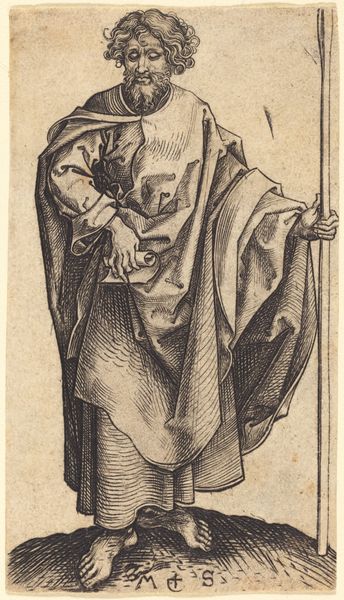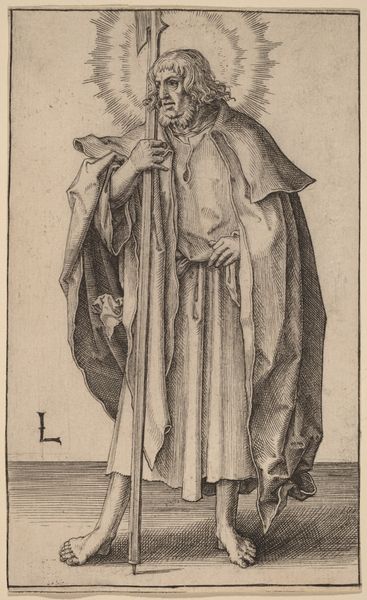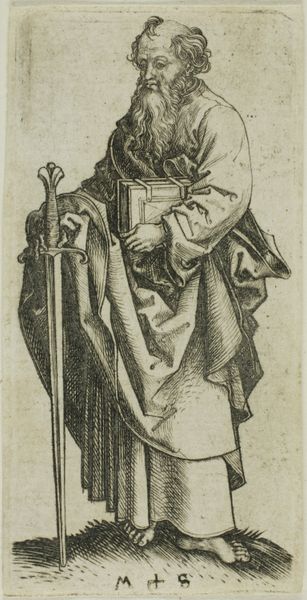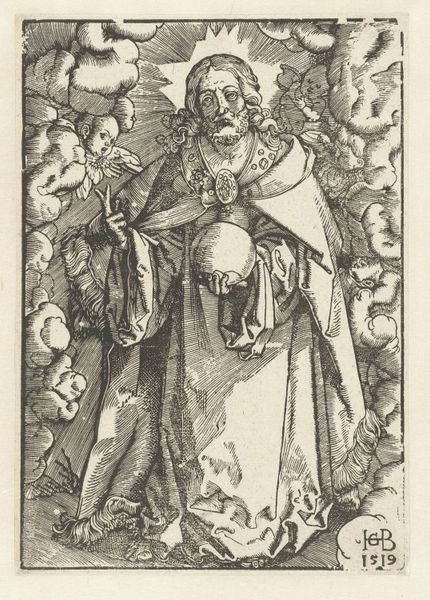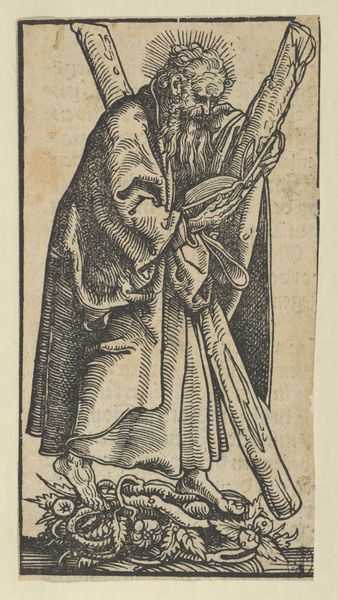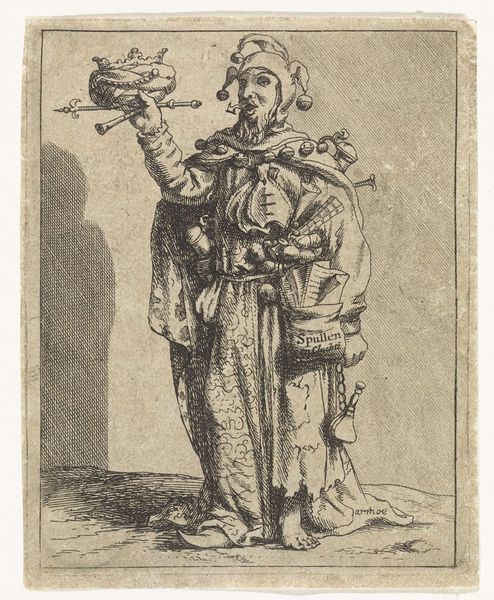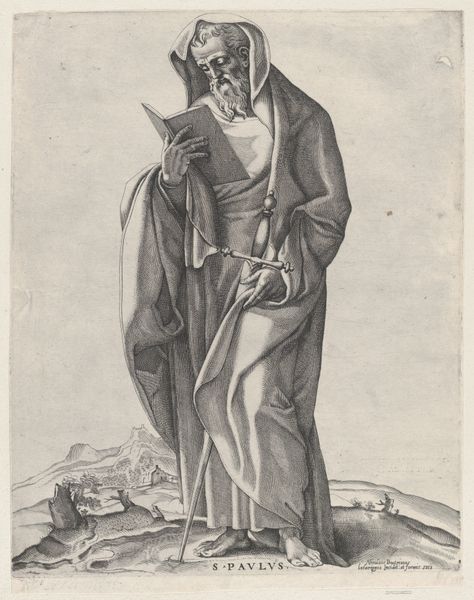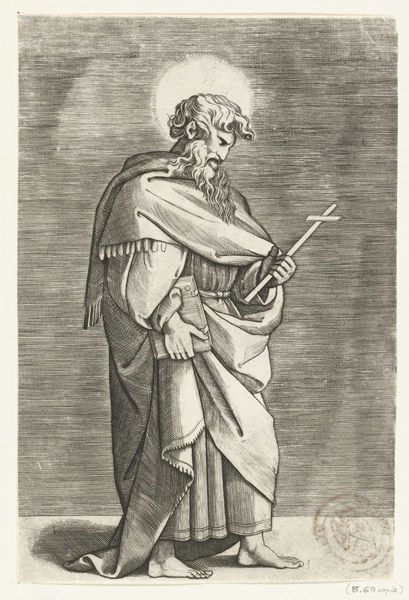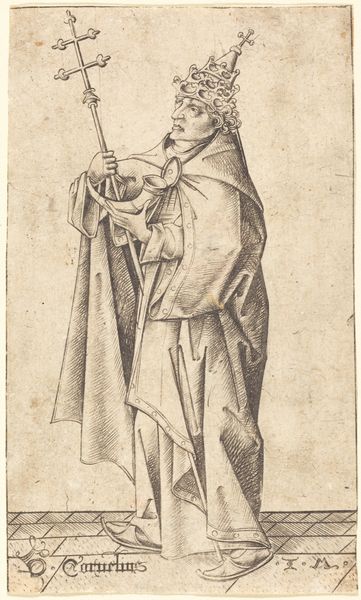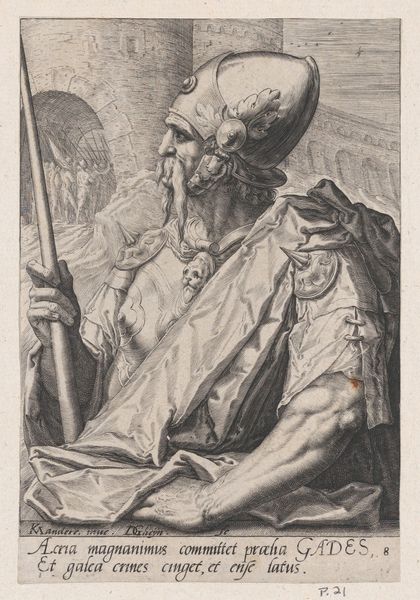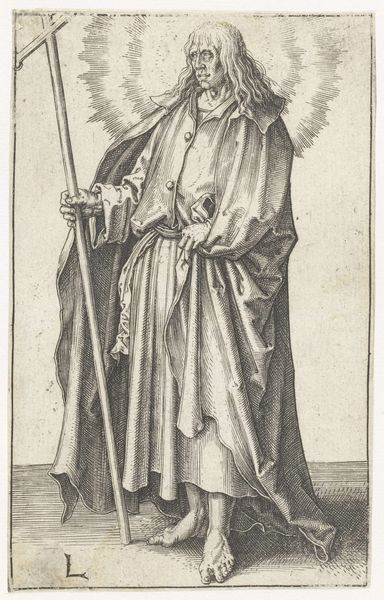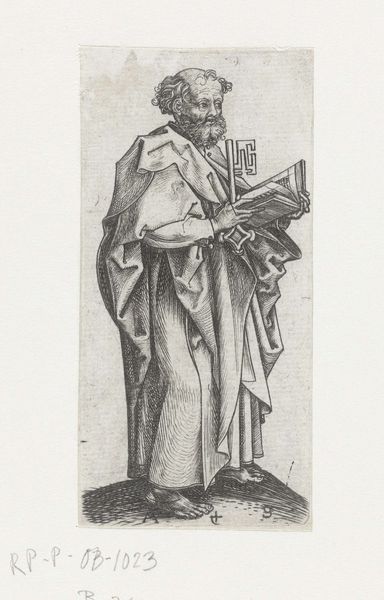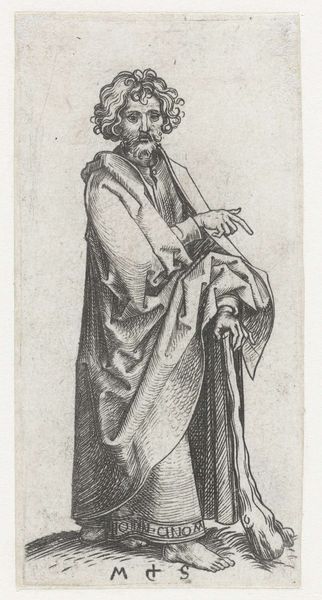
drawing, print, engraving
#
portrait
#
drawing
#
medieval
# print
#
mannerism
#
figuration
#
men
#
line
#
history-painting
#
academic-art
#
engraving
Dimensions: Sheet (trimmed): 13 13/16 × 8 9/16 in. (35.1 × 21.8 cm)
Copyright: Public Domain
Editor: So, here we have Nicolas Beatrizet’s “Portrait of Pope Paulus IV,” dating sometime between 1530 and 1566. It's currently at the Met. It’s a print, an engraving. The details are astonishing! I'm really struck by the texture created just with lines. What’s your perspective on this piece? Curator: Looking at this engraving, I'm drawn to the labor involved in its creation. Consider the sheer number of precise, deliberate lines needed to build up form and texture. The artist isn't just depicting the Pope; they’re also showcasing a specific mode of production, where value is created through painstaking, repetitive work. Editor: That’s interesting! I hadn't really considered the act of making as part of the message. Curator: Think about the context: the rise of printmaking coincided with massive social and religious upheaval. Who had access to these images and how did these prints function in disseminating the image of power? Notice the materiality of the print itself— the paper, the ink, the very act of replication. It transformed access to imagery. How does that democratize art? Or does it? Editor: That’s a great point! I suppose this image becomes reproducible and distributed among a broader audience. Is the value diminished because it's not one of a kind? Curator: Exactly! It invites questions about authenticity, value, and who controls the means of artistic production. Editor: It really does shift how we value art. I’ll definitely look at prints differently now, seeing them as products of specific social and economic conditions as much as artistic skill. Curator: Indeed. By examining the materials and process, we unveil layers of meaning embedded in the work.
Comments
No comments
Be the first to comment and join the conversation on the ultimate creative platform.
